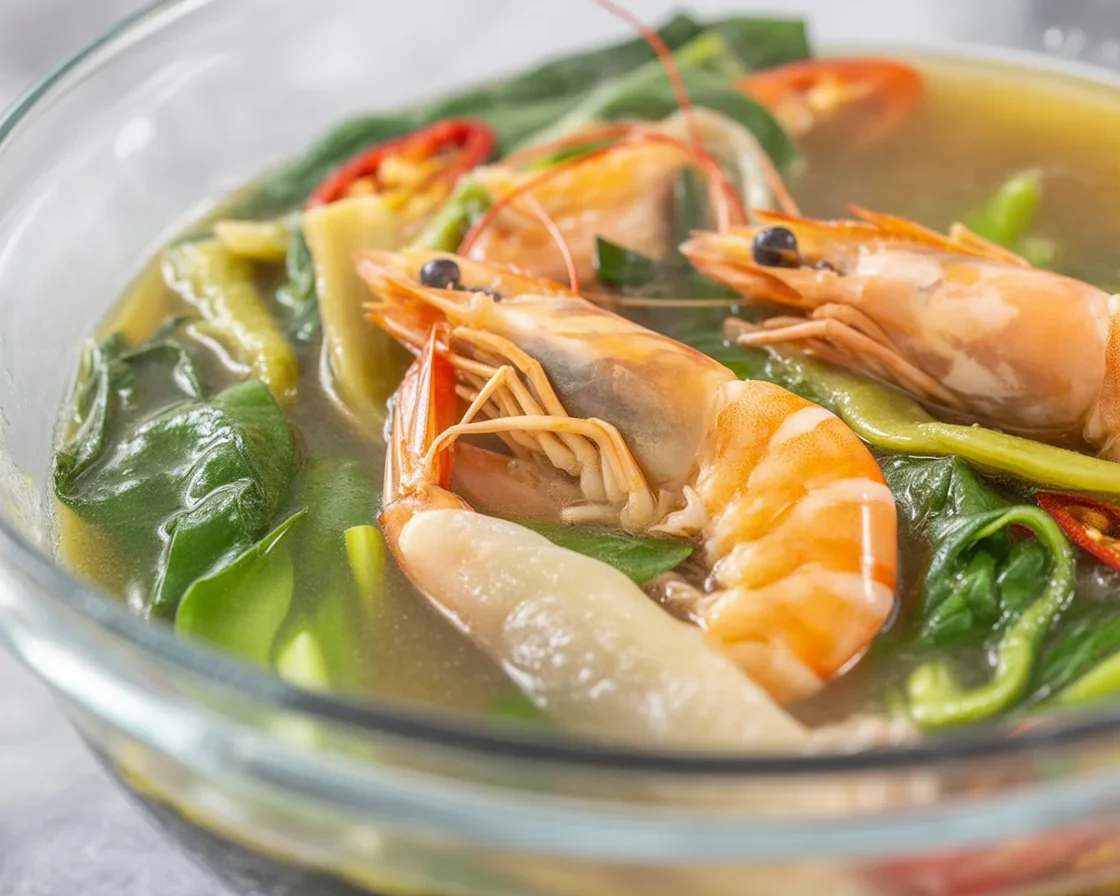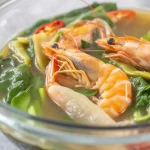Shrimp sinigang always hits the spot, doesn’t it? Especially when you crave something bold and comforting and can’t deal with hours in the kitchen (or cleaning up, ugh). My first attempt at shrimp sinigang was wild. I totally overdid the tamarind and my folks made those surprise-face expressions at dinner. But hey, everytime I try it now, my family actually shows up early for dinner. You want to learn how to make this, right? Trust me, it’s not rocket science. In fact, check out this step-by-step for sinigang na hipon shrimp in sour tamarind soup and, if you’re feeling extra, peek at this baked cheese shrimp for a fun twist. 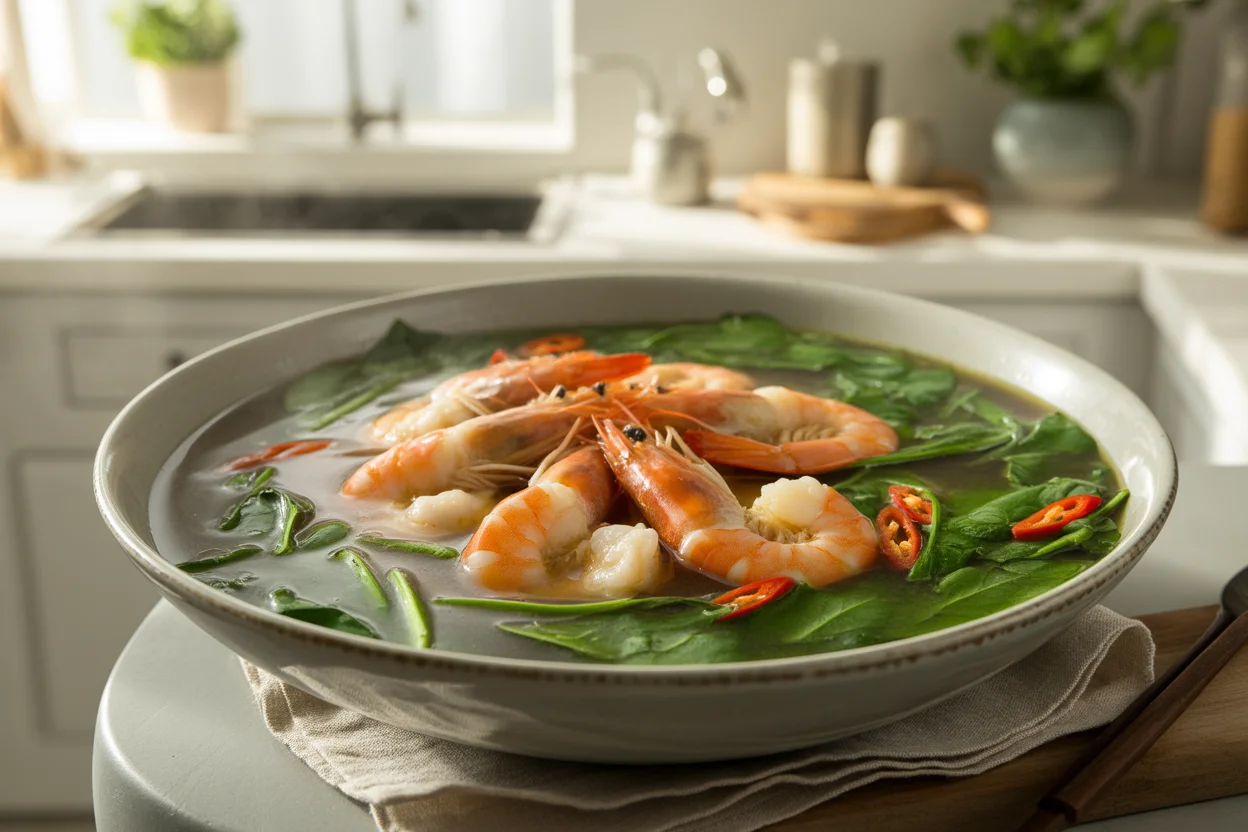
What is Sinigang?
If you’ve never tried sinigang before, picture the most comforting sour soup—yep, that’s the one. Sinigang is a Filipino stew bubbling with “tart and tangy” magic. Tamarind gives it the punch. Sometimes you use pork, sometimes fish, but sinigang na hipon means shrimp stars in the show.
We Filipinos love the puckery taste, especially on rainy days. It’s like a hug with a zing. Every family recipe is a little offbeat (and everyone swears theirs is the best, of course). Just don’t expect anything mild—it should make your cheeks kinda tingly. Sometimes, my aunt would even take a spoonful, wince, then say, “Perfect!” Every visit, her version tastes a bit different. That’s half the adventure.
Soup’s loaded with veggies too, like kangkong, radish, string beans, and eggplant. Bonus: you can pretty much swap in what’s in the fridge. 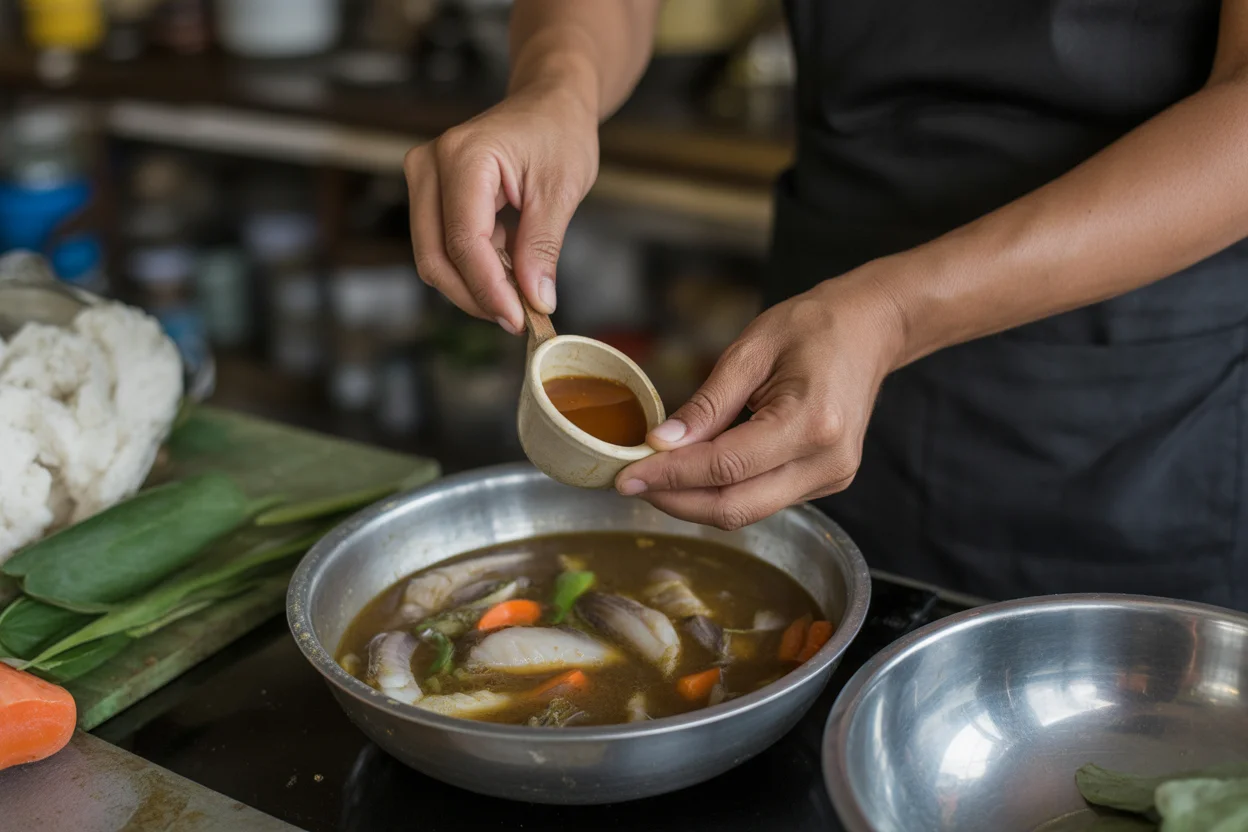
How to Cook Sinigang na Hipon
So, buckle up, here comes the fun part. Cooking sinigang na hipon is totally doable—even if you’re nervous about shrimp.
You’ll need:
- Shrimp (with heads for best flavor, please)
- Tamarind mix (fresh is awesome, but ready-mix packets work fine)
- Water
- Tomatoes, onions, radish, sitaw (string beans), eggplant, and kangkong (water spinach)
Instructions:
Start by boiling water, then toss in onions and tomatoes. This gives that base flavor time to mingle. Add radish and eggplant next, since they need a minute to soften up. Shrimp goes in once the veggies are about halfway done—cook just till those little guys turn pink. Go easy—shrimp cooks fast (no one wants rubbery seafood). Sprinkle in the tamarind mix. Taste. Add more if you like it sharp. Veggies wilted? Soup bubbling? Throw in kangkong and serve hot and sour.
Don’t be scared to taste as you go. Soup should “wake up” your tastebuds, but not send you running for milk. If you want a visual, there’s this creamy ginataang hipon in coconut milk recipe which uses similar steps, just with coconut. 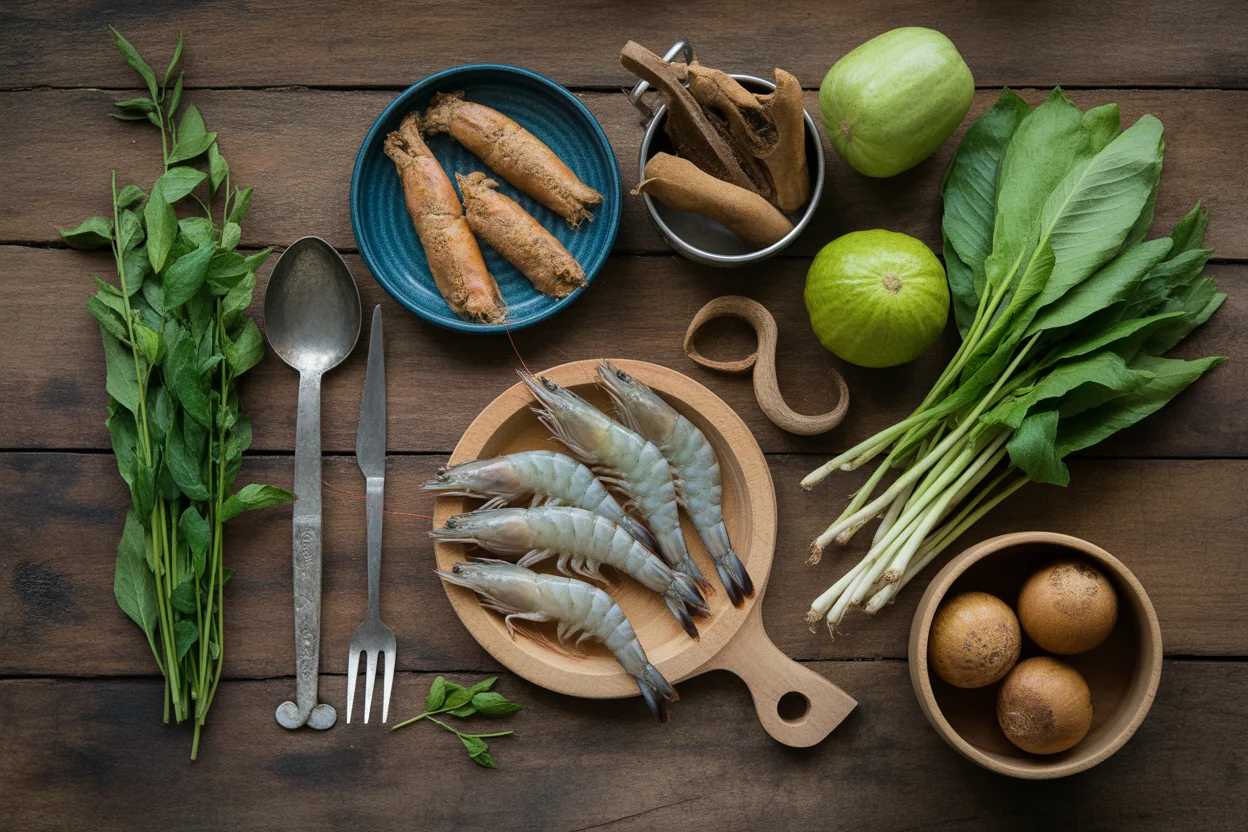
Sinigang na Hipon Recipe Tips
A couple of things make sinigang na hipon extra excellent. First, fresh shrimp—seriously, the mushy frozen ones? Not the same vibe at all. Heads on, shells on, more goodness in the broth.
If you want more veggies, throw in okra or even baby corn (Don’t tell my Lola I said that…). If you love spice, one green finger chili. Leave it whole so it doesn’t overpower everything.
Should you use ready-mix or fresh tamarind? Both work, truly. I use packets on weeknights. If you’re feeling fancy or traditional, boil the real thing and mash it in.
Big tip: Don’t overcook. Taste before adding more tamarind. Soup can go from perky to pucker-up in seconds!
“I followed your easy sinigang na hipon tips last Sunday and my kids literally drank the broth—okay, not literally, but almost! So simple, so delicious. My picky husband asked for seconds. Game-changer. Thank you!” — Mylene D.
A tasty savory sour soup
Few things in life beat a giant bowl of savory and sour sinigang na hipon on a gloomy day. The shrimp brings a sweet, almost buttery flavor, balancing the tamarind’s zing. And those veggies? They soak up all that taste.
This isn’t a subtle soup. You’ll sweat a little, but you’ll slurp it all up anyways. Grab a bowl of rice and a spoon. Dip your shrimp. Don’t be shy—use your hands if you get desperate. Oh, and save some soup for tomorrow. Flavor only gets richer overnight (Life tip!).
If you’re obsessed with shrimp like I am, or want to nerd out further, here’s a shrimpy noodle favorite: pancit palabok noodles with savory shrimp sauce. If you haven’t tried it, you’re missing out.
Other Healthy Sour Soups to Try
Of course, if you like this, you’ll probably go nuts for other Filipino sour soups. There’s a world outside shrimp!
- Sinigang sa miso: Adds funky, fermented flavor to the broth.
- Fish sinigang: Use bangus (milkfish). Really healthy and budget-friendly.
- Meaty sinigang: Pork or beef ribs, with a deep, savory aroma.
- Vegan versions: Toss mushrooms and eggplant, skip the seafood or meat. Still sour and cozy!
Filipino food just gets it—sometimes you want soup that both hugs and punches you in the mouth. And honestly, nothing cures “rainy-day blues” quite like it.
Common Questions
Can I use frozen shrimp?
You can, in a pinch. But if you want that “five-star restaurant” flavor in your sinigang na hipon, go for fresh. Seriously, it matters.
Is the tamarind packet too artificial?
Lots of home cooks use it for convenience. If you’re worried, cut it with a bit of lemon juice or sneak in a fresh tomato for brightness.
How do I avoid overcooking shrimp?
Watch close! Shrimp only needs about 2-3 minutes. Once they’re pink and curled, get them out (or serve right away).
Can I store leftovers?
Definitely. Sinigang na hipon tastes even better the next day. Just keep it in the fridge and reheat gently—shrimp toughens up fast.
What do I serve alongside?
Hot steamed rice. Bonus: a side of crispy fried fish, or even just some salted egg and tomato salad.
Whew! If you’re still hungry, or craving new ideas, swing by this amazing Sinigang na Hipon Recipe for another easy guide (plus pro tips about the sour factor). Oh, and if you can’t get enough Filipino shrimp dishes, this round-up of shrimp recipes is straight-up mouthwatering. Also, peep this pork and shrimp stew—mixing things up just a bit—for a hearty, special occasion meal. Just saying: once you get the sinigang bug, you’ll want to try every kind there is.
Sinigang na Hipon
Ingredients
Main Ingredients
- 500 g Shrimp (with heads) Fresh shrimp for best flavor
- 1 packet Tamarind mix Fresh is preferred, but ready-mix is acceptable
- 2 liters Water For the soup base
- 2 medium Tomatoes Diced
- 1 medium Onion Chopped
Vegetables
- 1 cup Radish Sliced
- 1 cup Eggplant Sliced
- 1 cup String beans (sitaw) Cut into 2-inch pieces
- 1 cup Water spinach (kangkong) Add last for wilting
Instructions
Preparation
- Start by boiling water in a pot and add chopped onions and diced tomatoes. Allow them to cook until softened.
- Add sliced radish and eggplant to the pot and cook for a few minutes until they soften.
- Add the shrimp to the pot and cook until they turn pink, which takes about 2-3 minutes.
- Sprinkle in the tamarind mix and adjust according to taste.
- Once the vegetables are wilted and the soup is bubbling, add the kangkong and serve hot.
